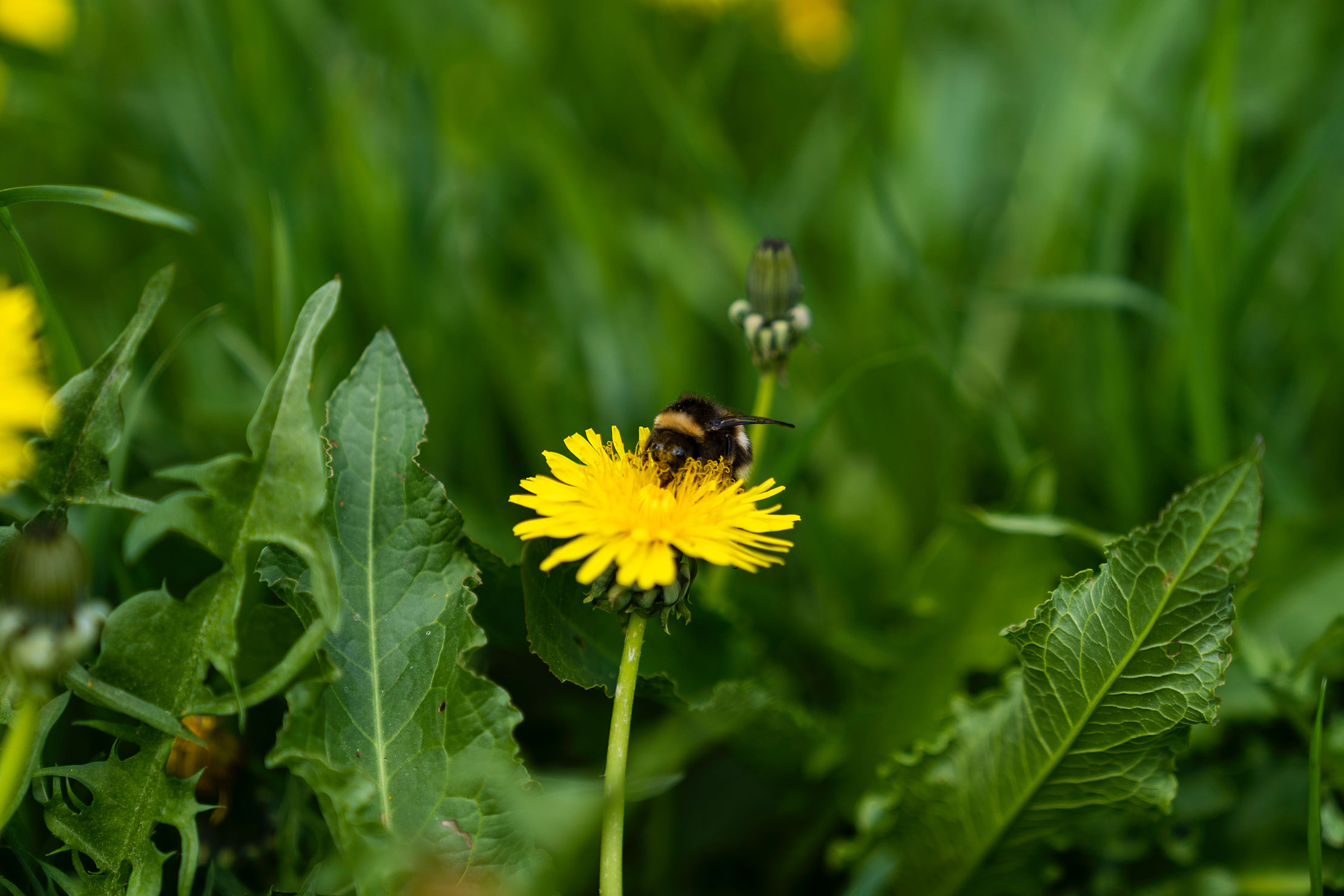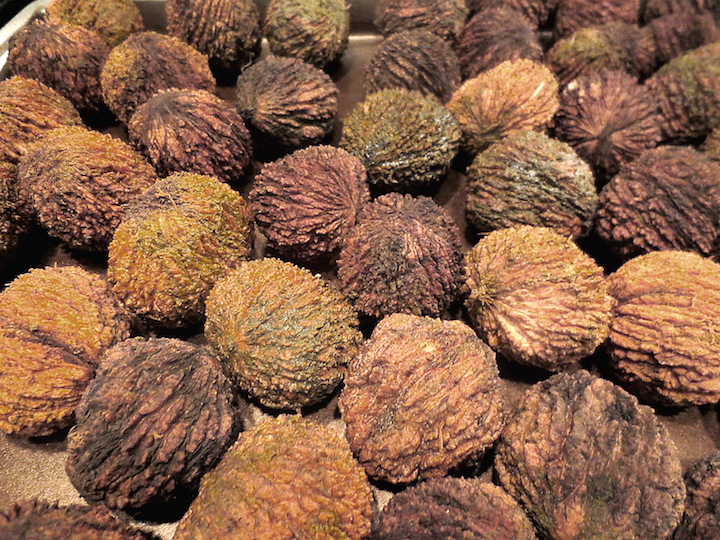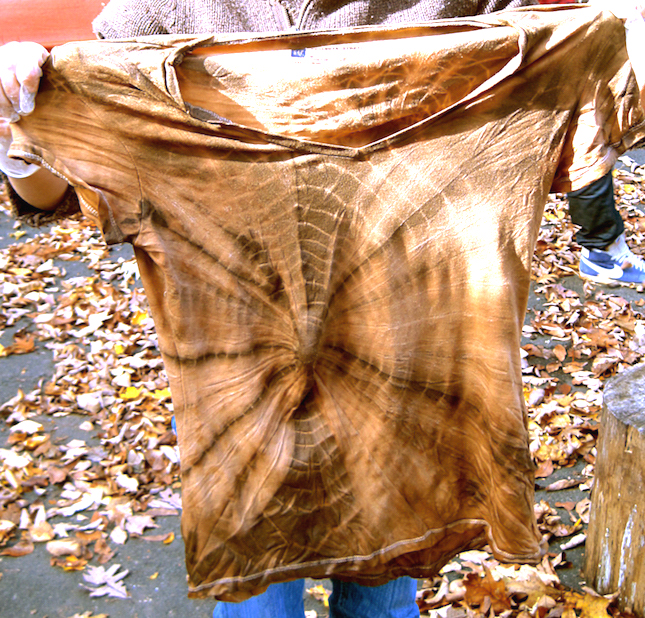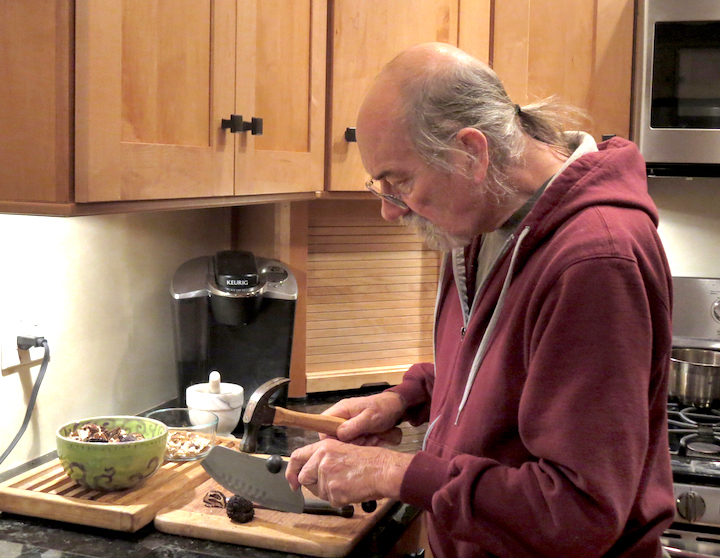Black Walnut Riches

Wild food forager Paul Tappenden describes the ways he makes the most of this sure sign of autumn.
Every fall, beginning in mid-September, I gather the black walnuts that litter the ground like green and black tennis balls all around our neighborhood. I try to gather the green ones, as they are less likely to contain the ubiquitous husk maggots. I remove the husks (usually by rolling them underfoot until the husks split) and put the nuts on a tray to dry them out, either in a low oven or in my dehydrator. After the initial drying I leave them sitting on a wire rack, to cure for about six weeks. Around Thanksgiving time they are ready to use.

To make use of the husks, I put them into a large bucket and pour on hot water. After a while, the water turns a deep, blackish brown. I pour it through a strainer into a second bucket, then use it to dye clothes or to stain wood. It makes the best tie dye effects.

Once the nuts have cured, I begin using them in my recipes. If I need nuts in my pastries, I’ll use either hickory nuts or black walnuts (or both), secure in the thought that they are fresh and haven’t been irradiated, like so many commercial nuts. Besides, black walnuts taste great!

The most challenging part is opening these tough shelled nuts. I use a strong knife and a hammer to split them in two, and then some snippers to remove the remaining shells (see below).
I encourage you to explore the many uses of one of nature’s many autumnal gifts.





